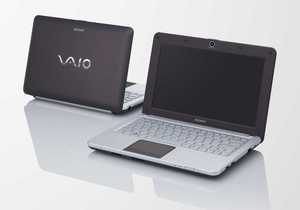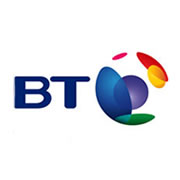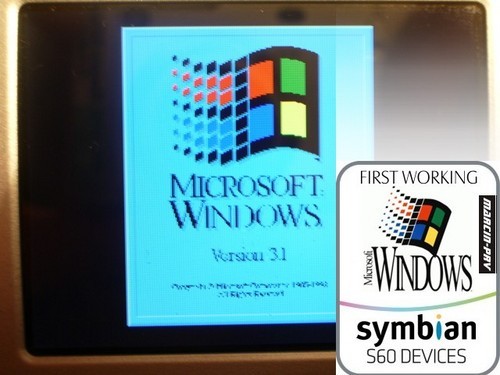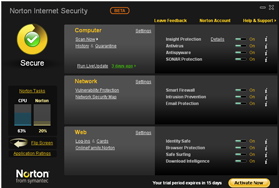
Complaints against EU open source agenda may overlook a policy breakthrough
A European Commission policy review white paper released last week (PDF available here) was brought to light in the US this week by virtue of a comment from its most vocal opposition. Yesterday, press sources including IDG's Paul Meller quoted the Association for Competitive Technology's Jonathan Zuck as taking sides -- not surprisingly -- against the white paper, accusing the EC of bias in favor of open source software producers over commercial manufacturers.
"We remain concerned that the policy framework suggested in the white paper seems to favor open source software over proprietary software to achieve more interoperability," reads another citation of Zuck's statement. Ironically, Zuck's ACT Web site from which the statement originated appeared to be the victim of a crash in its open source asset management system this morning, so only second-hand citations of Zuck were available today.

Sony's first netbook, the Vaio W: What goes around finally comes around
After all the noise Sony made about avoiding the term "netbook" with the release of its Vaio P ultraportable, and the statements Senior Vice President Mike Abary made about the Eee PC before that, it was beginning to look like Sony was never going to release a device in the netbook/mini-note form factor. But that has changed.
Today, Sony officially launched its first netbook. The 10.1-inch Windows XP-based Vaio W runs on a 1.66 GHz Intel Atom N280, has 1 GB of RAM, and a 160 GB SATA HDD. It's equipped with 802.11b/g/n, Bluetooth, a built-in Webcam, and offers 1366 x 768 screen resolution -- higher-than-usual for netbook screens.

Microsoft moves C#, .NET CLI to community license, helps Mono
In an announcement yesterday, Microsoft representative Peter Galli (a former ZDNet blogger) told the company's shared source community that it's decided to make its C# programming language and the Common Language Infrastructure model that makes C# programs run in the .NET Framework, available under the company's unilateral Community Promise.
As a result, it may become feasible for anyone to build a C# interpreter and a compatible CLI, or even a C# low-level compiler -- not even necessarily for Windows -- without having to pay Microsoft a fee. The implementer now need only promise in turn not to take IP infringement actions against Microsoft, essentially accepting that the technology is Microsoft's to give away.
"The Promise applies to developers, distributors, and users of Covered Implementations without regard to the development model that created the implementations, the type of copyright licenses under which it is distributed, or the associated business model," Galli wrote.

What's Next: Circling the wagons against cell phone exclusivity deals
Hey, guess what? Your Social Security number!
Afternoon of Monday, July 6, 2009 • Carnegie Mellon researchers have run the numbers, and with information on just your date and place of birth, they can predict with decent accuracy some or all of the digits of your Social Security number. The problem's especially severe for the 21-and-under crowd, whose numbers were uniformly assigned soon after birth and therefore conform especially closely to certain well-known numbering patterns. The authors of the survey said they were able to ID all nine numbers of test subjects' SSN in fewer than 1,000 tries for 8.5% of that population, making those numbers "no more secure than a three-digit PIN." In smaller states such as Delaware, they could guess 1 out of 20 numbers in 10 or fewer attempts. The research is available at the link above and will be presented today (Tuesday) on the Proceedings of the National Academy of Sciences. The authors will also present at Black Hat later this month.

British Telecom sacks bitterly unpopular Phorm ad platform
In an announcement this morning, British Telecom said it has decided to halt BT Webwise, its prospective targeted advertising platform, calling the move a cost-cutting measure as the company invests £1.5 billion in improved broadband deployments. As a result, shares in the BT, TalkTalk and Virgin Media joint Venture plummeted in value by some 40%.
In early 2008, BT, TalkTalk, and Virgin Media joined forces to build a single targeted ad platform for their respective subscribers. The service would provide the ISPs anonymized user search data so they could serve more appropriate advertisements. Unfortunately, after the service had been announced, BT admitted that it had already tested the service without telling users. This was naturally met with petitions and protest from angered users and privacy advocacy groups.

Don't wait for Microsoft's patch: Secure Windows now from Monday's 0-day
There's an old ActiveX control hanging around many Windows systems that's still accessible to Internet Explorer, whose original purpose was to tune into MPEG2 transport streams -- typically live video streams sent from a server using MPEG2 format. Yes, MPEG2 transport streams still exist, but any more, browsers including IE8 have appropriate plug-ins to handle them -- Windows Media Player is one, Apple's QuickTime is another.
But still there's this ActiveX control sitting there doing nothing, waiting to be leveraged for an attack. Earlier today, Microsoft acknowledged a SANS Internet Storm Center report saying that there's an active exploit of this disused bit of functionality published on Chinese Web sites. Apparently malicious users are utilizing it now in "drive-by" attacks that could result, say security experts including Sophos' Graham Cluley, in installation and execution of nearly any malicious payload.

CBS is the last man standing against Hulu
Today marks the beginning of ABC's arrival on Hulu. Last April, Disney's ABC Enterprises jumped aboard NBC Universal and News Corp's increasingly popular video syndication site, and this morning, the first ABC program was rolled out for streaming.
The first ABC show available on Hulu is the drama "Grey's Anatomy," of which five episodes have been posted. For the next two weeks, more content will be added, including episodes of the network's biggest hits like "Desperate Housewives" and "Scrubs." A month before Disney and ABC arrived at a deal with Hulu, the network agreed to first bring its content to YouTube, where it would supply clips of popular shows and short-form episodic content equipped with "different monetization options" than standard YouTube videos.

Not just Vista: The operating system is dying, too
Okay, so I raised a bit of a stink with last Friday's Wide Angle Zoom. So to make sure my position on Vista, operating systems, Microsoft and the future of the technological world under President Barack Obama's leadership are completely understood, I wanted to address some of the more...ah, pointed perspectives from the Comments section. I've paraphrased the wordings to protect the innocent. Here goes:
Vista is a great operating system. There's nothing wrong with it.

Bolt: the dark horse mobile browser
In the roughly six months since Bitstream's Bolt mobile browser debuted in beta at Mobile World Congress, it has been installed more than a million times, its developers said today. Like Skyfire, which also reached a million installs before RTM, this cross-platform mobile browser is designed to accelerate the browsing experience on resource-constrained devices.
Bolt is compatible with any mobile handset that supports the Mobile Information Device Profile (MIDP) 2.0, the Java spec for embedded devices. Page rendering takes place outside of the phone on Bolt's servers, and content is heavily compressed for consumption, so even 2G freebie phones can handle full Web browsing. The app itself is only 140 Kb in size. Included in the huge list of supported devices are handsets from Research in Motion, LG, Nokia, Motorola, Samsung, and Sony Ericsson. There are versions specifically designed for BlackBerry and for entry-level phones.

Symantec goes live with Norton 2010 betas
Download Norton Internet Security 2010 beta from Fileforum now.
Download Norton Antivirus 2010 Beta from FileForum now.

Nokia: Android? Are you crazy?
Adding to the swollen category of "rumored Android device makers," Nokia was briefly rumored to be readying a touchscreen smartphone based on the Android mobile OS for Nokia World in September.
But rather than say it doesn't comment on rumors as companies often do, Nokia flatly denied the rumor, citing the "well known fact" that Symbian is its platform of choice.

What's Now: Drenched with 'Purple Ra1n,' iPhone users caught eating 'redsn0w'
Drenched with "Purple Ra1n," iPhone users caught eating "redsn0w"
Afternoon of Sunday, July 5, 2009 • If you're a Mac user and you're wondering where those fruit-punch-looking stains on your keyboard are coming from, well, it must be an outbreak of "Purple Ra1n." Last Friday, independent developer GeoHot gave iPhone 3G S users a shower of sorts with his pwnage tool for Windows, enabling iPhone users to install their own apps outside of AT&T's control. Yesterday collaborator Ari Weinstein ported that tool to the Mac, although he also acknowledged that for the "full freedom experience," users should turn to the Dev-Team's "redsn0w" tool, for unlocking their 3G S units from the AT&T network.

IE8 WSUS update push to begin August 25
After months of availability to users willing to seek it out, Internet Explorer 8 will be rolled into Windows Server Update Services starting August 25. The change will affect those versions of Windows currently relying on WSUS -- in other words, not Windows 7 RC.
Microsoft's IEBlog has the details for those administrators who use WSUS but prefer not to make the IE8 switch just yet, or wish to make that switch on their own calendar.

In New York, online booze loses a Circuit Court decision
Wine drinkers in the Empire State still can't buy wine directly from out of state, in a decision released July 1 by the Second Circuit Court of Appeals. The ancient NY regulatory system was allegedly designed to guard against the interference of organized crime in the booze business, which ought to confuse the heck out of anyone who just wants to pick up a few nice bottles from wine.woot.com.
Arnold's Wines v. Boyle, as the case is known, pitted two New Yorkers and an Indiana wine retailer against the New York State Liquor Authority. (Daniel Boyle is the chairman of the Board and is listed as the lead defendant in that official capacity.) They were jointly suing to have the sections of the Alcohol Beverage Control Law barring direct-to-consumer sales ruled unconstitutional.

Geeks vs. journalists: A tale of two worldviews
This episode of Recovery is brought to you by a city full of nerds prepping for the Seattle Zombie Walk, because your Rain City geeks are all about the BRAAAAAINS and their undead data centers, and by frequent Betanews commenter PC_Tool, who said something in a comment that got me thinking.
I wrote earlier this week about an essay by Richard Posner that suggested that what the media needs to survive in the era of the Internet is a ban on linking, excerpting and such. Conversations about business models and copyright belong with Lockdown, and we're still talking about them in the comments section there this morning. But there are some things no one talks about concerning the old-line media, and here in the friendly confines of Recovery, I thought I'd go ahead and say them, because they may confirm what you've suspected all along:



